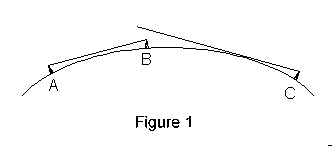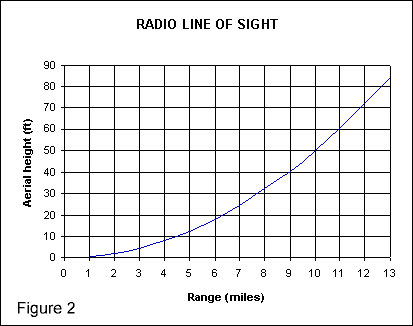

You know all about ThrustSSC Communications and Video Manager from the last issue of Mach 1 News and here he tells you some of what he is actually working on. The days of simple car-to-pits communication are long gone and during and after every run, a wealth of information will be collected for reporting and analysis purposes. Plans call for audio, video, digital photographs, written reports and data from the car itself to be collected together and transmitted from a PES (Personal Earth Station) provided by Hughes Network Systems via a satellite link. It will hit the UK via another Hughes system before being transmitted to the Digital provided Alpha Webserver at Newbury. There, the data will be unbundled and sent on to a variety of sources. Swansea University for further CFD analysis and DERA for structural and suspension load analysis. The news reports will be put on the Internet straight away. But before all that happens, the business end on the desert needs to be taken care of.
A common misunderstanding is that a communications system comprises only a radio; thatís not necessarily true. A Communications System (comms system) takes information and transfers it from one place to another. The information can be in many forms, but commonly it is spoken voice or digital data, and it can be transferred by complex or simple methods using cables, satellites, radios or even carrier pigeons or Aldis lamps!
To define the ThrustSSC teamís comms system it is first necessary to define what form our information will be and where it needs to be transferred from and to. There is clearly the car itself and a `pit stationí, but there are also all the support team personnel, fire trucks, ambulances, chase car, tow-truck etc. Thinking of the car for a minute, Andy Green will need to speak to the `pit stationí, the `start teamí (who will assist him strap into the car and carry out any last minute checks prior to the run), and the `turnaround teamí at the other end.These are two very different requirements for the Pits is positioned at the centre of the track six miles away and the Turnaround Team about 13 miles off. Whilst the Pits and the Turnaround Teams will be in a relatively quiet environment, the Start Team will be operating with a very high level of engine noise. The car also has over 100 sensors passing information to an on-board computer which needs to provide data to the pit station to enable the Systems Team to do its work. So the system requirements are for voice and data to be passed to the pit, and voice to be passed to the Start and Turnaround teams.
To pass voice messages over a distance of 8-10 miles from a moving vehicle to other moving vehicles and a pit station clearly requires a transmitter which come in all sizes and power outputs and operate on different frequencies. In simple terms low frequency signals travel further than high frequencies but the wavelength of a signal increases as frequency decreases, and aerial size is related to wavelength. Therefore, higher frequencies have smaller aerials. Unfortunately, we cannot select the best frequencies we like because in most countries frequencies are licensed from the State, this is to minimise the potential interference between different users. In America the Federal Communications Commission is responsible, and in the UK it is the Department of Trade and Industry. To comply with both countrysí licensing requirements, ThrustSSC has a radio which operates in the Very High Frequency (VHF) band.

One of the drawbacks of VHF frequencies is the way in which they propagate through the atmosphere. They use what is known as the `space waveí which means they travel in almost perfectly straight lines and do not follow the curve of the earth. Figure 1 shows the limitations.
Clearly signals from transmitter `Aí can be received at aerial `Bí but signals from transmitter `Cí cannot be
received by either aerial `Aí or `Bí unless `Aí or `Bís aerials were much taller. This is the same problem that
we all suffer with our vision, because light also travels in straight lines, and the maximum visible distance is
limited to the Line Of Sight (LOS). VHF radio waves do in fact bend a little bit, and therefore travel a bit
further - hence the radio term is known as Radio Line Of sight (RLOS). So the radioís range will be limited by
the height of the transmitting and receiving aerials and the curvature of the earth. Iím ignoring any
obstructions in between, such as hills, because there arenít any on the desert where we run! Iím sure all you
mathematicians have immediately grasped that this problem can be reduced to a formula with the aid of a bit of
trigonometry.
 However, to save you the trouble Figure 2 is a plot of the formula that links RLOS to aerial
height as a simple line graph.
However, to save you the trouble Figure 2 is a plot of the formula that links RLOS to aerial
height as a simple line graph.
The graph shows that to achieve RLOS to a point on the earthís surface 7 miles away, the transmitter aerial needs to be 25ft above the ground. Whilst the transmitter power does affect range, in a large open space like the desert, RLOS will be the limiting factor. If RLOS is not achieved, then increasing the transmit power will merely push a stronger signal out into space. Enough theory, what does this mean for ThrustSSC? As it is not practical to build a 25ft tower on a car that will be driving at 850 mph, the pit station transmitter/receiver needs to have an aerial mast at least 25ft high. The aerial on the mast will be a fairly standard 1/2 wave dipole as used on many ground installations.
The car aerial is a little more difficult. First we need an aerial that can withstand the loads caused by air pressure at Mach 1, and not cause significant aerodynamic effects that could upset the carís stability. Additionally, it needs to provide reliable links with the pit station wherever the car is during the runs, start-up and turnaround phases. We also need to be able to afford it!! The aerial is currently being manufactured, but thatís another part of the story that will come later.
As ever, all the planning in the world could easily be rendered useless by some insignificant or totally unexpected set of circumstances, but then again thatís part of the challenge of record breaking!
 |
 |
 |
||
| Sponsored by | This site best viewed with Microsoft Internet Explorer 3 | |||